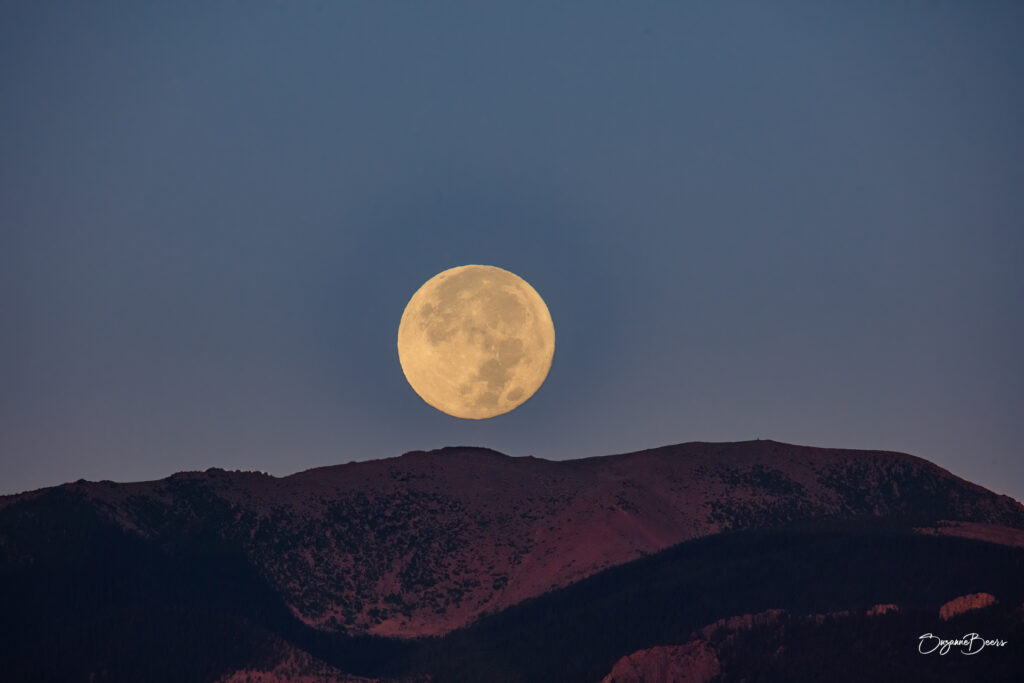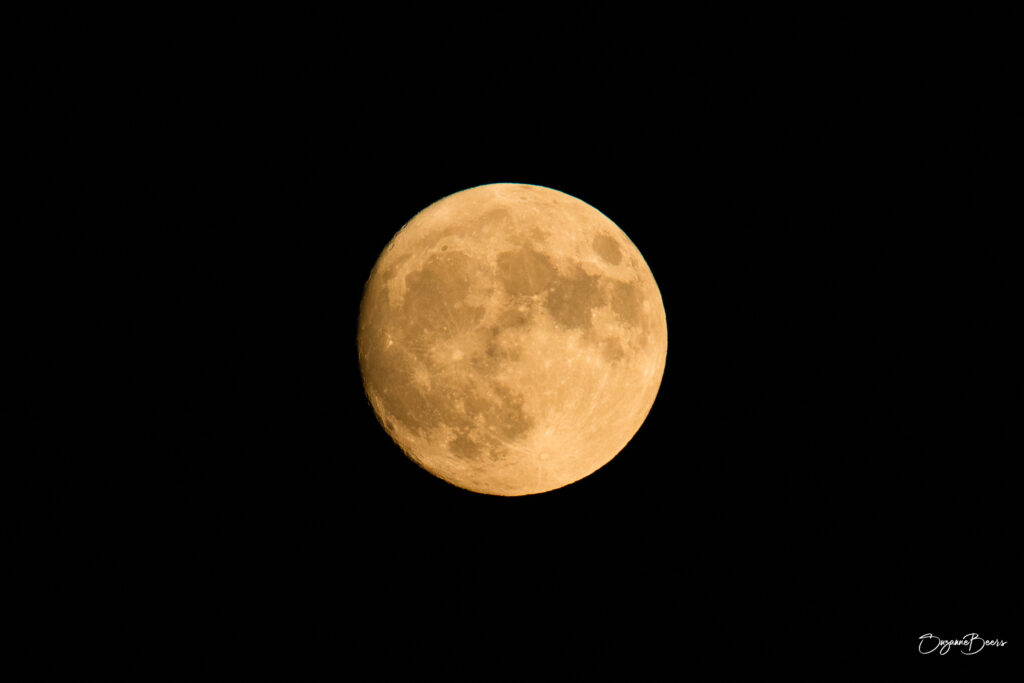
Full Blue Moon setting on Colorado’s Front Range, 31 August 2023 at 0536MDT
Fun facts
A blue moon is an additional full moon that appears in a subdivision of a year: the third of four full moons in a season. The phrase in modern usage has nothing to do with the actual color of the Moon, although a visually blue Moon (the Moon appearing with a bluish tinge) may occur under certain atmospheric conditions—for instance, if volcanic eruptions or fires release particles in the atmosphere of just the right size to preferentially scatter red light.
The term “blue moon” has traditionally, in the Maine Farmer’s Almanac, referred to an “extra” full moon, where a year which usually has 12 full moons has 13 instead. The “blue moon” reference is applied to the third full moon in a season with four full moons, thus correcting the timing of the last month of a season that would have otherwise been expected too early. This happens every two to three years (seven times in the Metonic cycle of 19 years). The author of a March 1946 article in Sky & Telescope attempted to decipher the traditional practice of the editors of the Maine Farmers’ Almanac by examining old issues of the almanac. Without enough almanacs to see the correct pattern, he conjectured the wrong rule for ‘blue moons’, which led to the modern colloquial misunderstanding that a blue moon is a second full moon in a single solar calendar month, with no link to the order it occurs in a season. The phrase “once in a blue moon” is also used idiomatically, which means an event happens rarely, like the blue moon itself. An example in a sentence: “My sister lives in another state, so I only see her once in a blue moon.”
One lunation (an average lunar cycle) is 29.53 days. There are about 365.24 days in a tropical year. Therefore, about 12.37 lunations (365.24 days divided by 29.53 days) occur in a tropical year. In the widely used Gregorian calendar, there are 12 months (the word month is derived from moon) in a year, and normally there is one full moon each month, with the date of the full moon falling back by nearly one day every calendar month. Each calendar year contains roughly 11 days more than the number of days in 12 lunar cycles. The extra days accumulate, so every two or three years (seven times in the 19 year Metonic cycle), there is an extra full moon in the year. The extra full moon necessarily falls in one of the four seasons, giving that season four full moons instead of the usual three, and, hence, a “blue” moon.
Folklore named each of the 12 full moons in a year according to its time of year. The occasional 13th full moon that came too early for its season was called a “blue moon”, so the rest of the moons that year retained their customary seasonal names.
{From: https://en.wikipedia.org/wiki/Blue_moon }
Equipment
Imaging Equipment: Tamron SP 150-600mm f/5-6.3 Di VC USD G2 for Canon EF lens; Canon EOS 5DS R camera on tripod
Capture & processing notes
Full Moon: ISO1600, f/11.0; 1/500 second, 600mm focal length; Captured 29Aug2023, 1903MDT
Moon with HCH Flag: Moon: ISO1600, f/11.0, 1/500 second, 150mm focal length; Captured 31Aug2023, 0512MDT. Flag: ISO1600, f/11.0, 1/15 second, 150mm focal length; Captured 31Aug2023, 0514MDT.
Moon setting on Front Range: ISO1600, f/11.0, 1/500 second, 600mm focal length; Captured 31Aug2023, 0536MDT.
Shooting location: HCH, Colorado Springs, Colorado
Processing: Processed in Lightroom, composite image created in Photoshop


